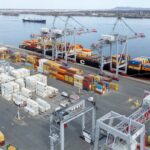In the shadow of climate urgency and shifting global trade alliances, Canada stands at a critical crossroads. As nations worldwide race to secure their positions in the emerging clean energy economy, Canada’s resource wealth and manufacturing capabilities present an unprecedented opportunity—one that extends far beyond traditional trading relationships with the United States.
The global clean energy transition isn’t merely an environmental imperative; it’s rapidly becoming the defining economic battleground of our generation. According to recent analysis from Clean Energy Canada, countries representing over 70% of global GDP have established net-zero targets, creating a $3 trillion annual market for clean energy technologies and services by 2030. This isn’t speculative—it’s the new economic reality that’s already reshaping global trade dynamics.
“Canada’s prosperity has historically been built on our natural resources,” notes Merran Smith, Executive Director at Clean Energy Canada. “But in today’s economy, having resources isn’t enough—we need strategic policies that transform these advantages into competitive industries that can supply global markets.”
While the United States remains Canada’s dominant trading partner, absorbing approximately 75% of our exports, this concentration represents both strength and vulnerability. The Biden administration’s Inflation Reduction Act has triggered an unprecedented wave of clean energy investments across the American economy, creating immediate opportunities for Canadian suppliers. However, this concentration also exposes Canadian businesses to political volatility and policy shifts that can dramatically alter market access.
European markets, particularly following the implementation of the EU’s Carbon Border Adjustment Mechanism, are increasingly valuing low-carbon products. Japan, South Korea, and other Asian economies are similarly prioritizing clean supply chains as they pursue their own decarbonization strategies. India’s rapid growth and massive infrastructure needs present another significant opportunity for Canadian clean technology exports.
What distinguishes Canada in this new trade landscape is the combination of abundant clean electricity, critical minerals essential for battery technologies, and skilled manufacturing capacity. Unlike fossil fuels, which face declining long-term demand, these assets align perfectly with growing global markets.
“The countries that will thrive in the next decades won’t just be those with resources—they’ll be those with comprehensive strategies to develop competitive advantages in clean energy supply chains,” explains Mark Zacharias, Special Advisor to Clean Energy Canada. “For Canada, this means coordinating trade policy, industrial strategy, and climate commitments in ways we haven’t traditionally done.”
Federal initiatives like the Critical Minerals Strategy and recent clean hydrogen incentives represent important steps, but Canada still lacks the comprehensive approach visible in jurisdictions like the European Union and even certain U.S. states. Provinces continue to pursue often uncoordinated industrial strategies, missing opportunities for national alignment that would strengthen Canada’s competitive position.
The implementation of carbon border adjustments by trading partners means Canadian industries must accelerate decarbonization efforts or face disadvantages in key export markets. Companies able to verify low-carbon production will increasingly command premium prices and preferential access in markets worldwide.
For Canadian businesses, particularly those in manufacturing, resource development, and technology sectors, this shifting landscape demands strategic adaptation. Investments in emissions reduction, clean energy procurement, and product certification are no longer optional—they’re essential requirements for maintaining global competitiveness.
As the world moves inexorably toward cleaner supply chains, Canada’s fundamental question becomes not whether to participate in this transition but how to maximize its economic benefits. Will Canada leverage its natural advantages to become a clean energy superpower, or will it remain primarily a supplier of raw materials to more innovative economies?











